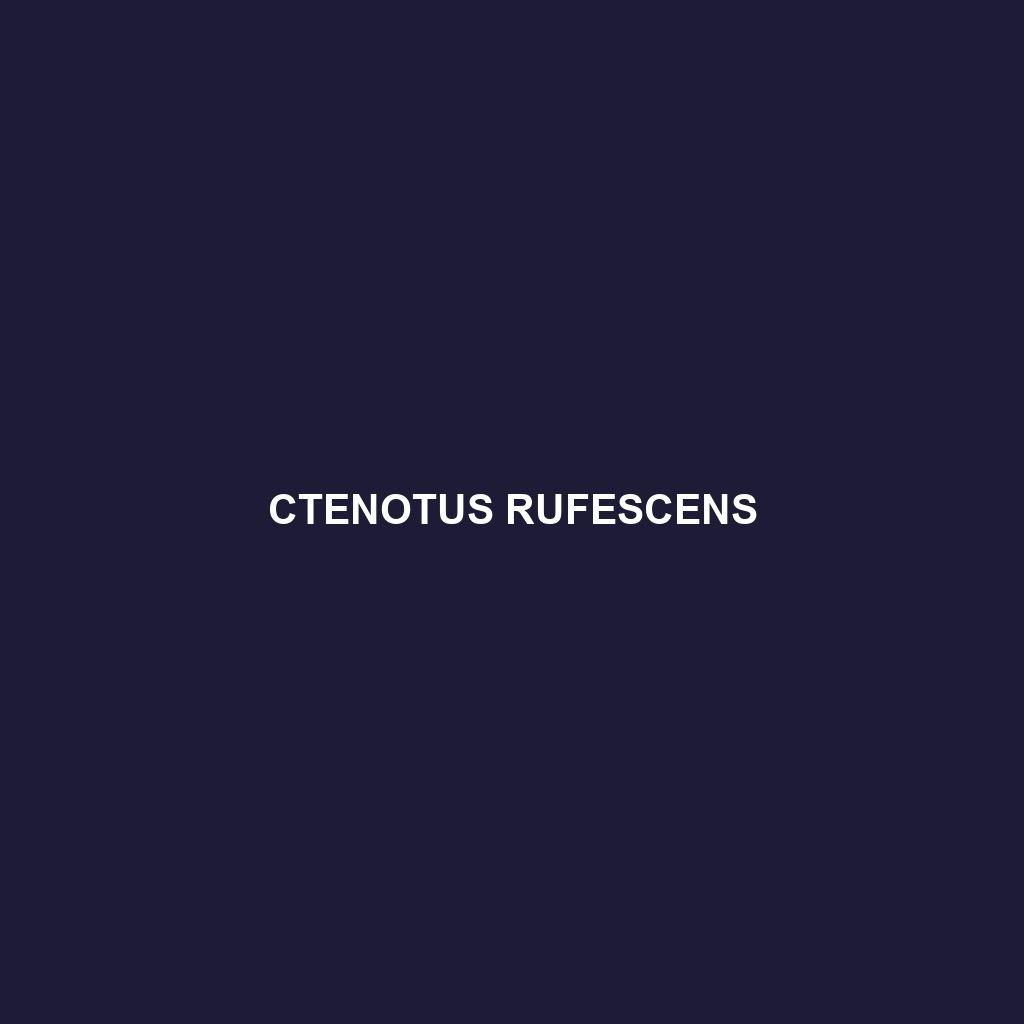Species Description: Ctenotus rufescens
Common Name: Ctenotus rufescens
Scientific Name: Ctenotus rufescens
Habitat
Ctenotus rufescens is primarily found in the arid and semi-arid regions of Australia, with a particular concentration in the southwestern areas, including parts of Western Australia. This species thrives in environments such as sandy or gravelly soils, often found in open woodlands, heathlands, and shrublands, which provide essential cover and resources for their survival.
Physical Characteristics
Ctenotus rufescens typically measures between 10 to 15 cm in length. It is known for its distinctive coloration that ranges from light brown to reddish-brown, often featuring darker stripes or markings along its body. The shape of Ctenotus rufescens is streamlined, allowing it to move quickly through its habitat. Noteworthy features include a pointed snout and long, slender limbs, which enhance its agility and adaptability to various terrains.
Behavior
Ctenotus rufescens exhibits both diurnal and crepuscular activity patterns, making it primarily active during the day and in the early morning or late afternoon. This species is known for its burrowing habits, utilizing underground retreats to escape heat and predators. Socially, these lizards are often solitary but may be seen interacting during the mating season, showcasing territorial behaviors as males establish dominance through displays and posturing.
Diet
The diet of Ctenotus rufescens is primarily carnivorous, consisting of small invertebrates such as insects and arachnids. Their feeding habits are opportunistic, often including ants, beetles, and other ground-dwelling organisms. This diet plays a crucial role in the ecosystem, as it helps control insect populations within their habitat.
Reproduction
Ctenotus rufescens breeds typically during the warmer months, particularly from late spring to summer. Females lay clutches of 2 to 6 eggs in sheltered areas, and the incubation period lasts for about 6 to 8 weeks. The hatchlings are independent from birth and exhibit similar physical characteristics to adults, though they are smaller in size.
Conservation Status
Currently, Ctenotus rufescens has not been listed as endangered or threatened. However, it is important to monitor this species due to habitat loss and environmental changes that could impact their populations in the future.
Interesting Facts
Ctenotus rufescens is often referred to as the “rufous ctenotus” due to its reddish-brown coloration. Interestingly, this species has adapted well to various environmental changes compared to other reptiles and can often be found in altered habitats, showcasing its resilience and adaptability.
Role in Ecosystem
As a predator of insects, Ctenotus rufescens plays a significant role in maintaining ecosystem balance. It helps regulate insect populations, which can contribute to the overall health of its habitat. Additionally, this species serves as prey for larger predators, highlighting its importance in the food web.
